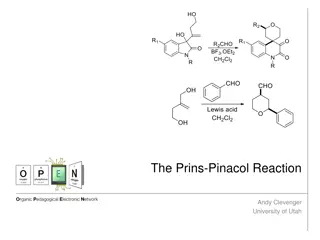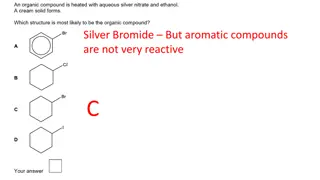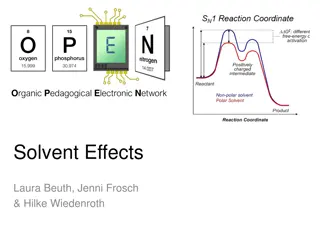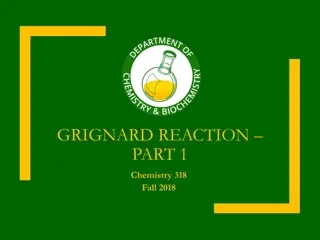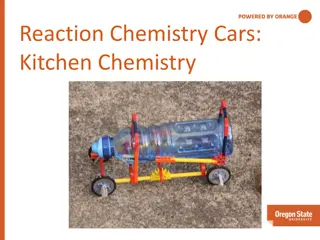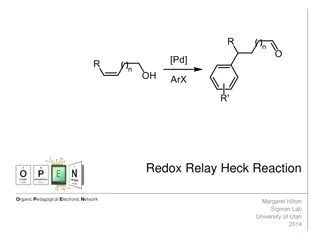Canizzaro Reaction in Organic Chemistry: Experiment and Applications
The Canizzaro reaction involves the disproportionation of aldehydes in the presence of a strong base to produce an alcohol and a carboxylic acid. This experiment, supervised by Lecturer Israa Radhi, explores the mechanism and practical application of the reaction. Benzyl alcohol and benzoic acid, products of the reaction, find use in pharmaceutical and industrial settings. Safety precautions for handling reagents like NaOH and HCl are emphasized to prevent skin burns and other hazards.
Download Presentation

Please find below an Image/Link to download the presentation.
The content on the website is provided AS IS for your information and personal use only. It may not be sold, licensed, or shared on other websites without obtaining consent from the author. Download presentation by click this link. If you encounter any issues during the download, it is possible that the publisher has removed the file from their server.
E N D
Presentation Transcript
Practical Organic Chemistry III Experiment Experiment No. (3) Canizzaro reaction Lecturer Israa Radhi 2023
Canizzaro reaction The disproportionation reaction of aldehydes without -hydrogens in presence of a strong base to produce an alcohol and a carboxylic acid Stanislao Cannizzaro is an Italian Chemist who first discovered this reaction. One molecule of aldehyde is reduced to the corresponding alcohol, while a second one is oxidized to the carboxylic acid.
Mechanism Step 1: Attach of the nucleophile (-OH) on the carbonyl group. Step 2 : Hydride transfer Step 3 : hydronium ion offers a proton
In Pharmaceutical , Benzyl Alcohol used at Low Concentration as: 1) Antiseptic (Bacterio Static). 2) Local Anesthetic. 3) Preservative for Food Industry. 4) In 10% Ointments is used as Antipruritic. In High Concentration Could Cause Hypotension and Respiratory Failure In Pharmaceutical Benzoic Acid used as: 1) Preservative For Food. 2) Cosmetic Industry (Lotions , Mouth Wash and Ointments).
Procedure 1. Dissolve (2gm) of NaOH in (2.5ml) of water , cool the solution at T.R. or tap water. 2. Add (2ml) of benzaldehyde with light shaking Put it in a dark bottle, left to the next week . 3. Add (5ml) of water to dissolve the soild substance with stir by glass rod . 4. Pour the solution in beaker and with heating , cool the solution at T.R. or tap water. 5. Pour the solution in separation funnel add (4ml) ether . 6. The separation funnel with the opening of the valve to exit the gases will form two layers (water and organic). 7. Separated the organic layer (benzyl alcohol) from aqueous layer ( sodium benzoate) 8. Separate aqueous layer which are contain the salt . 9. Evaporate the ether layer and collect (benzyl alcohol) . 10. Transfer aqueous layer to beaker and add concentration HCl . 11. Filter the solid substance and wash it in the water (10 ml)
Safety NaOH Causes severe skin burns and eye damage . HCl Causes severe skin burns and eye damage , may cause respiratory irritation. must Wear protective gloves / protective clothing / eye protection / face protection. In case of contact with eyes, rinse immediately with plenty of water and seek medical advice. In case of accident or if you feel unwell, seek medical advice immediately .








